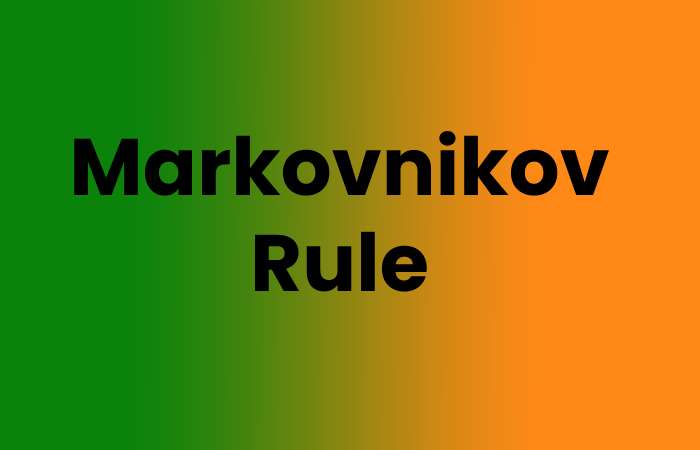Major Organic Product: Now sometimes, during electrophilic addition reactions involving alkenes. We do encounter a situation where we get more than one possible product. It is when our alkenes are asymmetrical, and the reactants that we are adding are also asymmetrical, such as hydrogen halide
HBr, HCl, or water (HO)
So what we need to do is to predict the major product for this reaction, and we can use the Markovnikov Rule for us to determine this significant product, so let’s take a look at this example:
So we have this example here, CH=CHCH
Now you notice what we have is my alkene is asymmetrical because if I look at my double bond, this C- remain attached to H while C- remain linked to H and CH
So these C are different, and later when we add asymmetrical reactants such as HBr, we will have two other products when my H is attached to C- versus when my H remain connected to C-.
Table of Contents
Markovnikov Rule

Markovnikov Rule says that for our major product, the H will remain added to the C with more H, so this rule is straightforward for us to apply. We also sometimes call this the “rich gets richer” rule because the C with more H will get more H.
So we can predict which C has more H. I can box up my double bond; then, I have a different C to count the number of H attached to each C. You notice that C- has H and H, so the C on the left-hand side has two H. Then the C- has only the H and R groups. Now take note, I have H here, but this H belong to C-, doesn’t belong to C- so we don’t count it as my H, so this C- only has one H here.
So this has one H, so if I compare the two, C- has H, C- has H, so obviously C- has more H then according to Markovnikov Rule, H will remain added to this C to give us our major product. So we have this product.
If I’m adding HBr to this alkene, this will be my major product; you notice my H is added to C- because C- is the one with more H, whereas, for Br, we add it to my C-.
Minor Product – Major Organic Product
So this compound we have drawn is the major product, and of course, we can remove our minor product. It’ll just be when H remain attached to the C with less H attached to my C-.
Alright, this is our minor product; you notice when my H remain attached to C-, the C with less H, and when my Br remain connected to C- this will give us our minor product, so this is my nominal product. So this is how we use Markovnikov Rule to predict the primary outcome for electrophilic addition reactions of alkenes. Now the next thing we want to do is to explain Markovnikov Rule.
Also read: Computar Lens M0814- MP2
Why is it that when H is Attached to C?
Why do I end up getting my major product when H remain attached to C with more H? We can apply what we learn from the electrophilic addition mechanism of alkene and explain Markovnikov Rule. So we have our example here you notice this is our alkene.
The same example as before and my HBr is here. Now, the first thing we have to do is we have to decide which one is my electrophile. My H is less electronegative, so it’ll be a positive delta charge. Br is more electronegative, so it is a partial minus charge
So my alkene, because it’s electron-rich, will attract something that is electron poor. So my H, in this case, because of its positive delta charge. H functions as the E+ or electrophile in this reaction. When we draw the arrow pushing, I draw an arrow from the double bond point to H. So one of the C, either C- or C- will attack the H, and this H-Br bond will break, and both electrons will go to Br.
So the consequence of this step is that I’ll form a carbocation because my C- and C- are different. When H remain joined to C- versus when H remain joined to C. Major Organic Product
Conclusion
I’ll end up with different carbocation intermediates, so let’s try to draw the two of them. So if H remains joined to C, my intermediate will look something like this. Alright, so this will be my intermediate where my H is bound to C.
Also read: What Refrigerator Size Do I Need?
